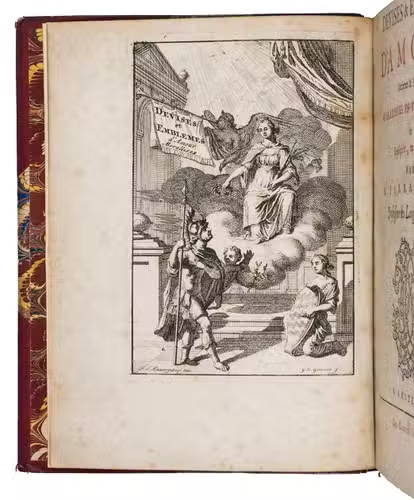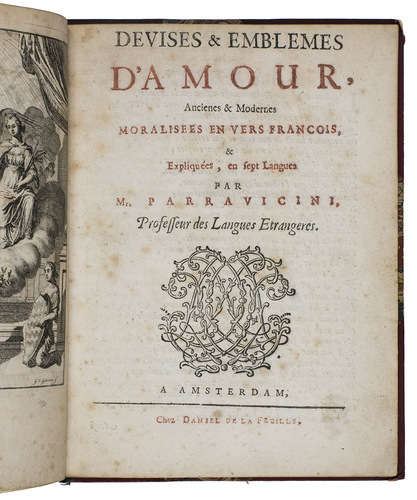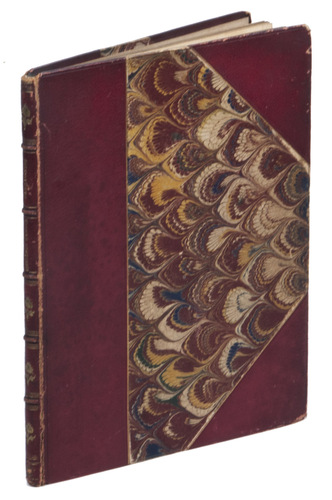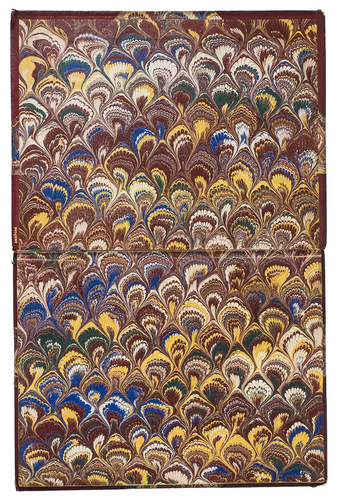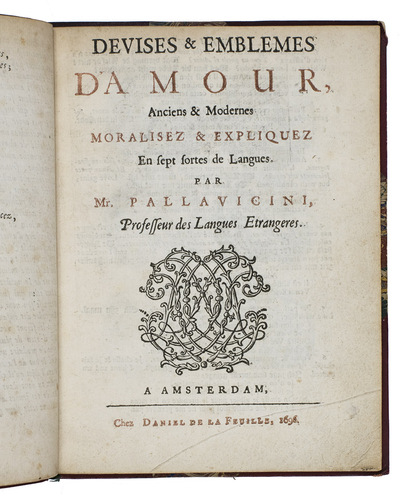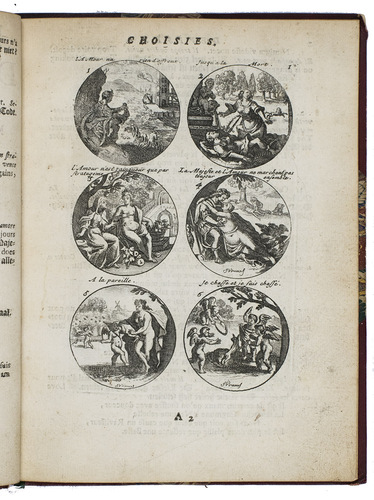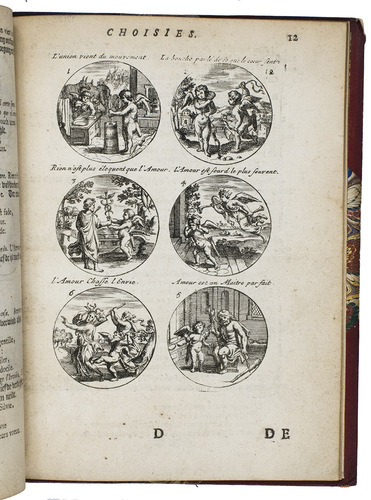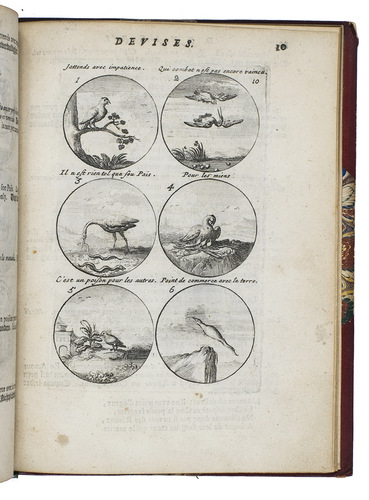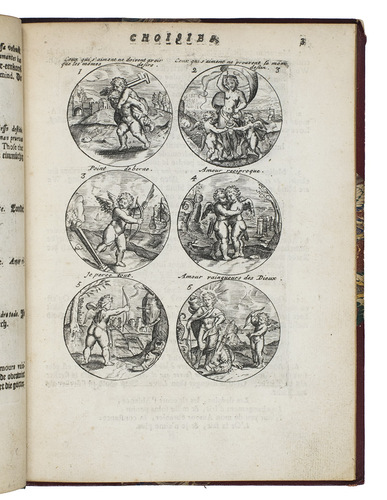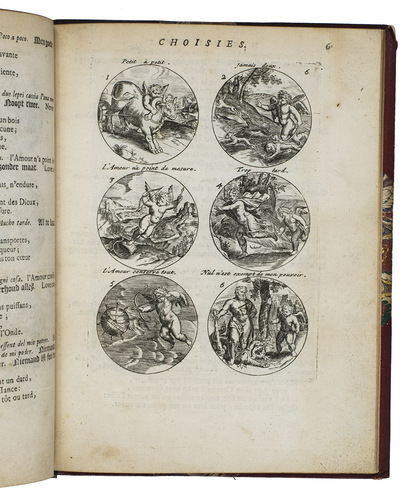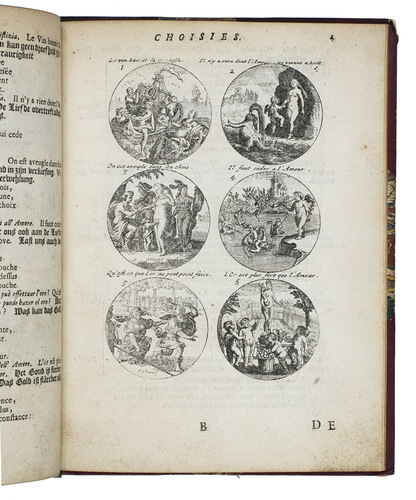PALLAVICINO, Ferrante.
Devises & emblemes d'amour, ancienes & modernes moralisees en vers Francois, & expliquées, en sept langues.
Amsterdam, Daniel de la Feuille, [1696]. 4to. With an engraved frontispiece by G. van Gouwen after Frans de Kaarsgiter, 2 title-pages in red and black, each with De la Feuilles woodcut DLF cypher-monogram, and 24 full-page engravings on integral leaves, each containing six circular emblems by Jan van Vianen, with a woodcut tailpiece at the end. Including: PALLAVICINO, Ferrante. Devises & emblemes d'amour, anciens & modernes moralisez & expliquez en sept sortes de langues.
Amsterdam, Daniel de la Feuille, 1696.
Half red goatskin morocco (ca. 1870?) by the Brussels bookbinder Émile Bosquet (signed "BOSQUET" in gold italic capitals with swash letters B and T on the front turn-in, at the foot, near the hinge). [8], 24, [2] pp.
€ 1,950
First and only edition of a curious love emblem book by the notorious Ferrante Pallavicini (1618-1644), an Italian writer of lampoons and satires which were so popular that booksellers and printers bought them from him at a premium. Pallavicino's scandalous satires, which cost him his head at the age of 25, were all published under pseudonyms or anonymously. On the title he is referred to as "Professeur des langues etrangeres".
There are 24 pages with six small circular emblems after Jan van Vianen. The emblems are derived from the emblems in the works of Jacob Cats, Daniel Heinsius' Emblemata amatoria, Otto van Veen's Amorum emblemata and Crispijn de Passe's Thronus Cupidinis. Each emblem has an engraved French motto and is accompanied on the facing page by translations of the motto in Latin, Italian, Spanish, Dutch, English and German. French stanzas supplement these mottoes. Though the emblems are derived from other sources, the text is entirely original.
Émile Bosquet (1834-1912) set up as an independent bookbinder in his native Brussels in 1860 and met great success, but his largely French clientele quickly dried up after Bismarcks 1871 defeat of France in the Franco-Prussian War decimated the French economy. Bosquet closed his own bindery in 1878 and managed binderies for other binders in Malines and France for the rest of his career. As a result, although "il tenait la première place parmi ses confrères Belges" his bindings appear "rarement dans le commerce" (Dubois dEnghien).
Slightly browned and the binding with a few scuff marks and worn hinges (the front hinge is cracked and some of the supports are broken there), otherwise in good condition. Adams, Rawles & Saunders, A bibliography of French emblem books II, F458 (10 copies); De Vries 245; Van Eeghen, De Amsterdamse boekhandel, III, p. 191; Landwehr, Emblem and fable books Low Countries (1988), 596 (4 copies); Landwehr, Romanic emblem books (1976), 560; Landwehr, Emblem books Low Countries (1970), 464; Landwehr, Dutch emblem books (1962), 173; Hollstein XXXVI, 199; Praz p. 443; STCN 843906448 (5 copies); for the binder: H. Dubois dEnghien, La reliure en Belgique, pp. 114-116; Fléty, p. 29.
Related Subjects:











